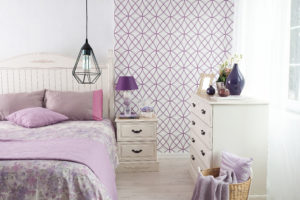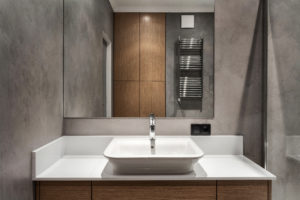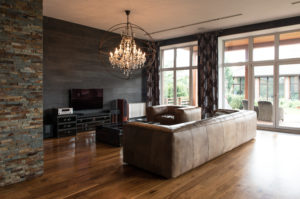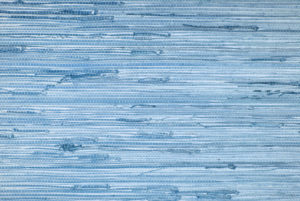Wall Textures: How to Choose the Right Ones for the Right Rooms

While color is one of the first things we think of when we’re refreshing décor, it shouldn’t the only thing. Wall textures are just as effective as paint – and maybe even more so – for livening up a room. When you add texture, you don’t just add color, you add dimension and depth. Even those who prefer neutrals can add some oomph with an interior wall texture. Dress up your home office with grasscloth, your bathroom with Venetian plaster or your bedroom with textured wallpaper and give your home an instant décor boost.
Venetian Plaster in Bathrooms and Kitchens

Lime-plastered walls – known today as Venetian plaster – has graced walls since ancient times. This mix of limestone putty and water is applied to walls to create a deep, velvety look and feel. This wall texture is a low-maintenance, durable material. Thanks to advances in technology, it can be easily patched, and most minor dings can be removed with soap and water or a light sanding.
Makes a good application for areas that are regularly exposed to water, like bathrooms and kitchens. The downside, if there is one, is that it takes a pro to apply it correctly, so it can require a bigger cost outlay up front than paint. But the benefits come as a result of its durability – unlike paint, which needs touchups every two to 10 years, plaster can last decades and even centuries when well cared for.
Textured Wallpaper: Wall Textures in Bedrooms and Living Rooms

Textured wallpaper comes in a dizzying array of options, emulating wood panels, exposed brick, fabric – anything you can imagine. And since you can now get it in peel-and-stick varieties (no more permanent applications required), even apartment dwellers can fearlessly update their décor.
Wallpaper can mask imperfections on walls, the texture distracting the eye from flaws. Because they’re made of vinyl or other resilient materials, wallcoverings are typically more durable than paint (yes, even the peel-and-stick kind).
Use an exposed-brick wall texture or transform your living room into a loft. Or try a flocked floral or subtle metallic in place of a headboard in the bedroom. Easy to install, easy to clean, and easy to love, textured wallpaper is perfect for bedrooms and living spaces
Grasscloth in Dining Rooms and Home Offices

Like Venetian plaster, grasscloth has been around for millennia. Originating in China more than 2000 years ago, grasscloth came into being when natural fibers were woven to rice paper and then applied to walls to insulate and provide beauty. In the 1960s and 70s it regained popularity and now its approval rating is surging again.
Grasscloth is used as an umbrella term to encompass wallcoverings made from hand-woven natural fibers on unpasted rice paper backing. The fibers range from hemp to jute to bamboo to sea grass.
No two rolls of grasscloth are alike. This wall texture will never line up like other wallpaper and the striations give walls a paneled effect. Grasscloth can be delicate and difficult to clean, and its kryptonite is water – which makes it patently unsuited to bathrooms and kitchens. It also can’t be cleaned the way you’d clean other wallpapers, by wiping with soap and water. Instead, you can gently vacuum it to maintain it.
Its subtle, natural, elegant vibe makes it worth the trouble, especially in low traffic, “adult” rooms like home offices or formal dining areas. If you’re concerned about its finicky nature, seek out vinyl grasscloth. It doesn’t have the same random patterns as the original, but you can get the look in a more durable, easier-to-care-for material.
Interested in upping your style with interesting wall textures? Learn more about our wallpaper installation services today.
